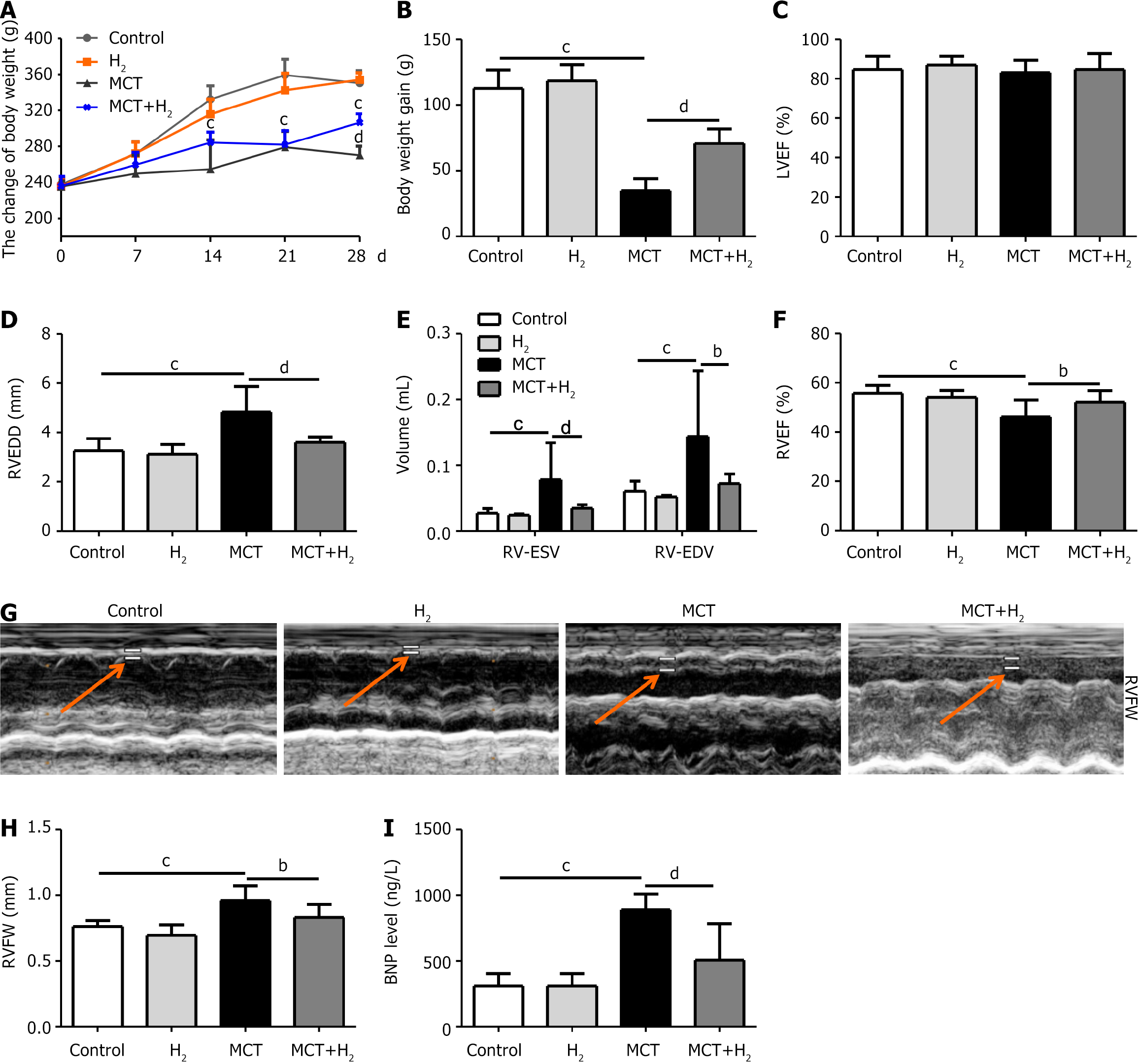Copyright
©The Author(s) 2025.
World J Cardiol. Jun 26, 2025; 17(6): 104832
Published online Jun 26, 2025. doi: 10.4330/wjc.v17.i6.104832
Published online Jun 26, 2025. doi: 10.4330/wjc.v17.i6.104832
Figure 1 H2 inhalation improved body weight and cardiac function in monocrotaline-treated rats.
A: Body weight (BW) changes in each group; n = 10; B: BW gain of each group 28 days after monocrotaline (MCT) injection; n = 10; C: Right ventricular ejection fraction (RVEF) of all groups; n = 10; D: Right ventricular (RV) end-diastolic dimension of all groups; n = 10; E: RV end-systolic volume and RV end-diastolic volume of all groups; n = 10; F: RVEF of all groups; n = 10; G: Representative echocardiographic images showing the RV free-wall (RVFW) thickness (at orange arrow, between white lines); n = 10; H: RVFW of each group; n = 10; I: Serum brain natriuretic peptide levels, as assessed by ELISA; n = 10. Data are expressed as the mean ± SD. cP < 0.01 MCT group vs control group; bP < 0.05 and dP < 0.01: MCT+H2 group vs MCT group. MCT: Monocrotaline; LVEF: Left ventricular ejection fraction; RVEDD: RV end-diastolic dimension; RV-ESV: RV end-systolic volume; RV-EDV: RV end-diastolic volume; RVEF: RV ejection fraction; RVFW: RV free-wall; H2: Hydrogen.
- Citation: Bai JC, Yang HX, Zhan CC, Zhao LQ, Liu JR, Yang W. Hydrogen alleviates right ventricular hypertrophy by inhibiting ferroptosis via restoration of the Nrf2/HO-1 signaling pathway. World J Cardiol 2025; 17(6): 104832
- URL: https://www.wjgnet.com/1949-8462/full/v17/i6/104832.htm
- DOI: https://dx.doi.org/10.4330/wjc.v17.i6.104832









